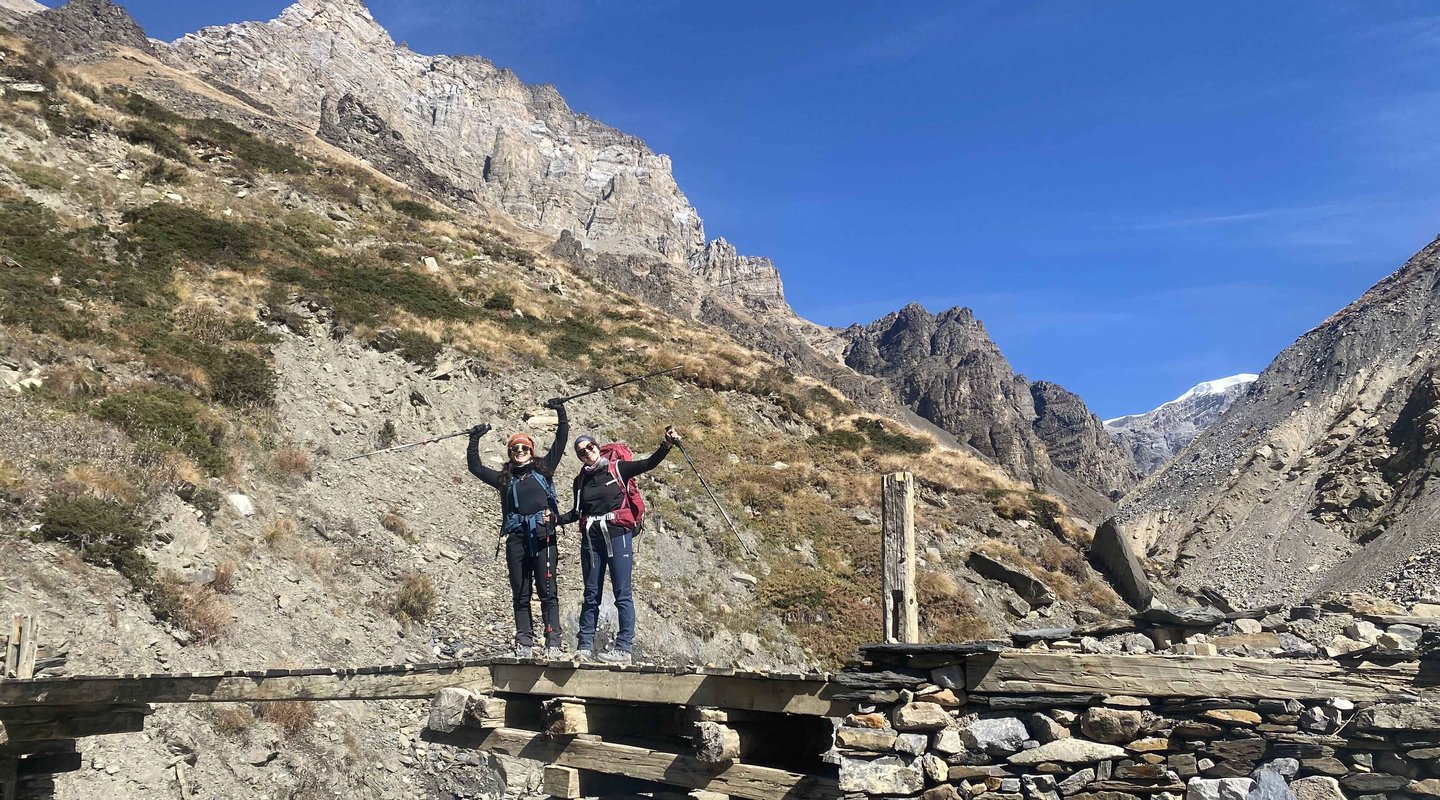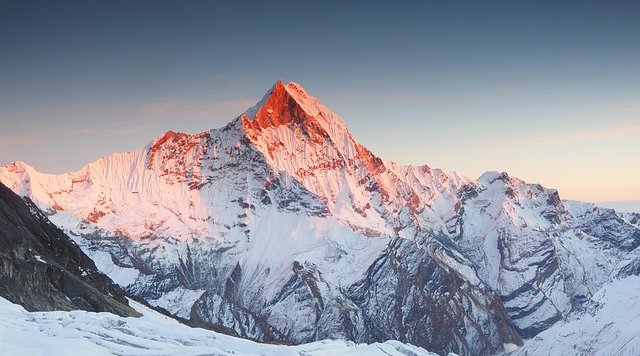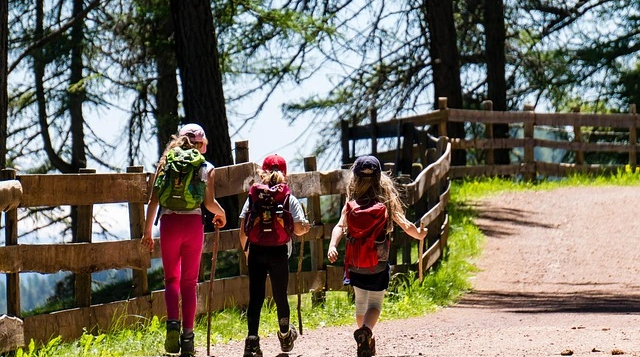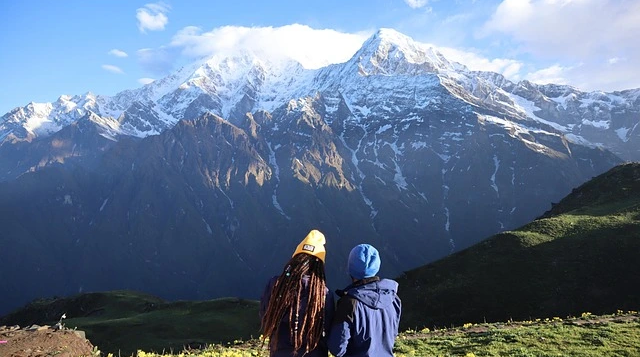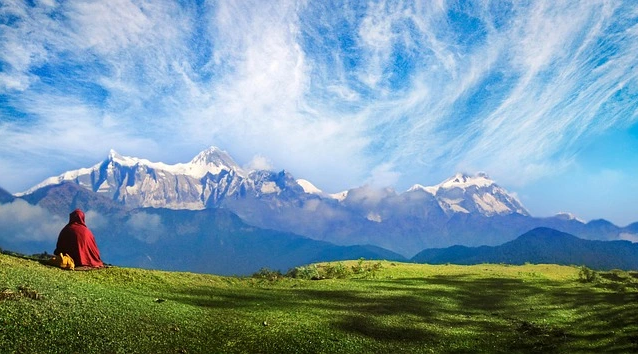Introduction
The Annapurna Circuit Trek is one of the most spectacular treks in Nepal, inviting all adventure seekers, cultural enthusiasts, and nature lovers. Annapurna Circuit Trek is safe, but you still need to take safety precautions to embark safely on the journey and to enjoy thoroughly.
Annapurna Circuit Trek offers you the majestic views of Mt. Annapurna and the Annapurna range, Mt. Machhapuchhre, and Mt. Dhaulagiri. You will be walking from a subtropical climate to a tropical climate and to an alpine climate, with the lush forests and tumbling waterfalls crossing the suspension bridges. The prayer flags and monasteries with the prayer wheels around showcase the testament of the strong Tibetan influence along the trails, offering you a cultural and spiritual awakening.
You should not be missing out on this once-in-a-lifetime adventure just because of your doubts and fears, as we are here to make you feel safe to consider this trek with our following Top 7 Safety Tips for Annapurna Circuit Trekkers.
Prioritizing Safety: Why the Annapurna Circuit Demands Preparation
Annapurna Circuit Trek is undoubtedly one of the most breathtaking treks, but it poses significant challenges along the trails, and you need to make thorough preparation for them. As you will be trekking at the high altitudes with the unpredictable weather conditions and the Annapurna Circuit trail hazards especially during the monsoon season and winter season, you need to be prepared to overcome those challenges and also you will embark on the journey to the highest point of the trek, Thorong La Pass (5,416 m/ 17,769 ft) which is the hardest part of the trek definitely makes you require a lot of preparation with the proper acclimatization strategies.
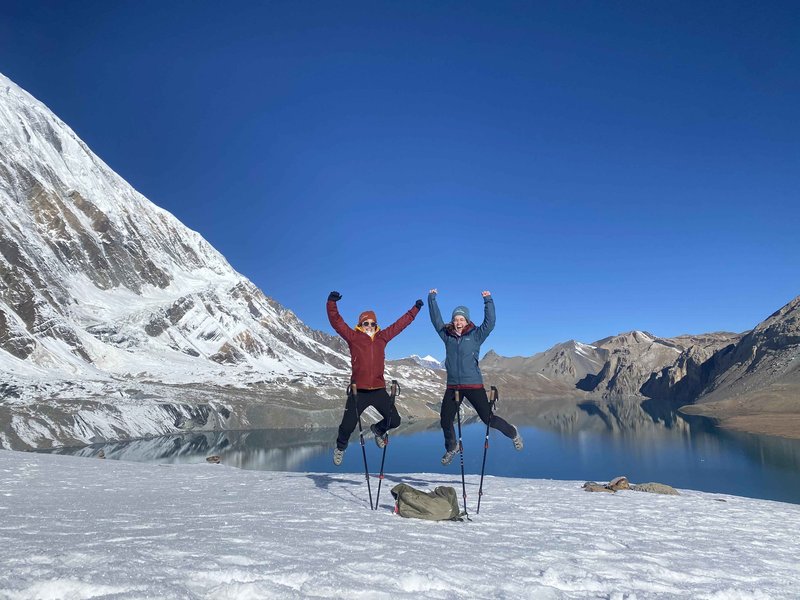
Essential Safety Tips for a Successful Annapurna Circuit Trek
- Acclimatize Properly and Understand Altitude Sickness (AMS, HAPE, and HACE)
You are prone to Altitude sickness because of the high altitudes, which is common, though but your AMS, which stands for Acute Mountain Sickness can become fatal as it may turn into severe conditions such as HAPE, which stands for High Altitude Pulmonary Edema, and HACE, which stands for High Altitude Cerebral Edema. These are the life-threatening conditions of altitude sickness, so understanding the different kinds of altitude sickness and acclimatization strategies is essential safety tips for Annapurna Circuit Trekkers, and you need to be aware of Annapurna Circuit altitude sickness prevention.
Symptoms to Watch For: If you get altitude sickness, the early signs on your body are nausea, dizziness, headache, and fatigue. These are the signs of AMS that need to be cured, not to let them progress further. However, if you get HAPE, you may get the feeling of suffocation when you lie down, you will get shortness of breath because of fluid accumulation in your lungs and and you will be severely coughing with pink frothy sputum, so it is dangerous as it can damage your respiratory system if it remains untreated. If you get HACE, you will get a severe headache with a lack of coordination and consciousness, leading to confusion with the swelling of your brain. Therefore, recognising these symptoms of altitude sickness is crucial to make a smooth and enjoyable journey.
Prevention Strategies: Gradual ascent is one of the most effective ways for Annapurna Circuit altitude sickness prevention. We highly recommend that you not ascend 300 to 500 metres above 3000 metres a day, and if you begin to see signs of altitude sickness in your body, you need to take more rest days. By doing this, you will minimize the risk of progressing the AMS further.
Along with this, hydrating yourself is very important. Dehydration will aggravate your symptoms of AMS, so you need to drink at least 3 to 4 litres of water every single day to replenish the minerals that you lose through exertion during the Annapurna Circuit Trek. You can also take electrolyte supplements to enhance your hydration level.
Furthermore, you can take medication such as Diamox (Acetazolamide) to prevent altitude sickness in the first place. Importantly, if you have any history of altitude sickness, we recommend you consult your health professional regarding the dosage and its potential side effects before you start taking this medicine.
What to Do if Symptoms Worsen: You need to descend immediately to a lower elevation and ideally to the place where your symptoms feel relieved. If you get severe headaches, can walk, coughing severely with fluid, and you get the feeling of confusion, then you should know that these are worsening conditions of AMS. So, you need to seek emergency medical assistance immediately without delay. You can take supplemental oxygen if available, and sipping water for hydration or taking electrolyte beverages is important too. And take Diamox (Acetazolamide) if you skipped taking it.
2. Mandatory Guide Requirement: Trek Safely and Legally
Annapurna Circuit guide requirement is beneficial for several reasons, and hiring a guide is one of the most essential safety tips for Annapurna Circuit Trekkers
Navigation: As for the navigation, you may find Annapurna Circuit trail hazards as the route is diverse with rugged and steep ascents, which can become more challenging due to the harsh and unpredictable weather conditions. So, a guide has a deep understanding of the terrain you will be embarking on, which will offer you a safer trekking experience.
Emergency: A guide will surely do wonders in emergency cases as they are experienced and well-trained in handling critical or life-threatening situations, such as Annapurna Circuit altitude sickness, as it can become fatal or serious injuries you may get during your hike. So, a guide can assist you in Annapurna Circuit altitude sickness prevention and to the local medical facilities available in the region, or arrange for an evacuation for you if needed.
Local Knowledge: A guide has deep knowledge about the locals and their culture. So, the system of Annapurna Circuit guide requirement will help you to connect with the locals as the guide will tell you about their rich history, customs, and traditions which not only gives cultural insights but also makes you aware about how to function or behave with the locals by not doing anything that enrages them.
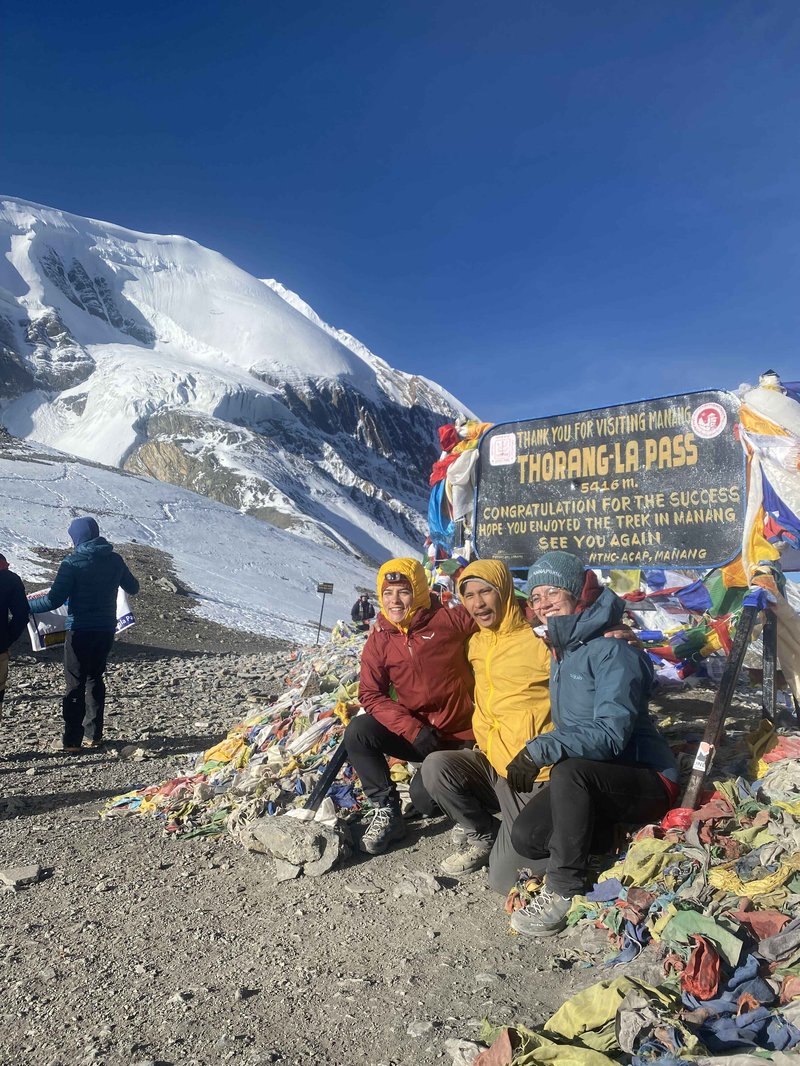
3. Comprehensive Travel Insurance: Your Lifeline in the Himalayas
When you plan the Annapurna Circuit Trek, there are a lot of risks involved because of the high-altitude trekking. So, getting Annapurna Circuit travel insurance with a wide coverage including all the medical facilities and emergency evacuation by helicopter is one of the crucial safety tips for Annapurna Circuit Trekkers.
You will be trekking above 4,000 metres, which makes you vulnerable to severe altitude sickness and to injuries, especially at Thorong La Pass (5,416 m/ 17,769 ft). A normal travel insurance will cover your normal medical facilities, including altitude sickness. Therefore, you need to get Annapurna Circuit travel insurance that explicitly states the coverage of high-altitude trekking, including the expenses of helicopter evacuation.
Note: You will not get your trekking permits issued without travel insurance.
4. Physical & Mental Fitness: Prepare Your Body and Mind
You need to have a structured plan for Annapurna Circuit physical preparation to do the Annapurna Circuit Trek. We highly recommend that you focus on building your stamina, core, and leg strength with cardiovascular training and shorter hikes, which is actually one of the best safety tips for Annapurna Circuit Trekkers.
As for your Annapurna Circuit physical preparation, you can do cardiovascular training such as running, swimming, and cycling for at least 30 to 60 minutes every day, which are moderately intense workouts. This will help you in building stamina, which is crucial for long walking hours. As for strength training, you can use treadmills focusing on your legs, core, and back muscles, which are essential for the rugged and uneven steep ascents carrying a backpack during the Annapurna Circuit Trek. You can also include lunges, squats, or planks into your routine.
You can start with shorter hikes and gradually increase the elevation and length. We advise you to hike where the terrain slightly corresponds with the actual terrain of the Annapurna Circuit Trek, which is beneficial for you. These training sessions for Annapurna Circuit physical preparation will help you navigate smoothly and ensure a safe and enjoyable trekking experience.
5. Pack Smart & Be Prepared for Weather Changes
Layered Clothing & Essential Gear
Packing smartly with layered clothing and essential gear is the key safety tip for Annapurna Circuit Trekkers. You will be trekking through the diverse climatic conditions. So you need to wear layered clothing for Annapurna Circuit weather safety. You can start with the moisture-wicking layers, followed by insulating layers, and waterproof and windproof outer layers.
The moisture wicking layers are the base layers so choose which are good for sweat absorbents and you can choose fleece or down jackets which will keep you warm throughout the trek and you should go for the waterproof and windproof jackets and pants to protect yourself from rain, snow and wind ensuring you Annapurna Circuit weather safety. For footwear, high-quality trekking boots that offer good ankle support are recommended. You should also pack warm gloves, a hat, and a pair of thermal clothes, and make a wise choice by opting for the quick dry ones, which are lightweight as well.
Additionally, essential gear can offer you a significant Annapurna Circuit weather safety as you need the trekking poles for smooth navigation, sleeping bag rated for cold temperatures, a reliable backpack with raincover, sunglasses for sun protection and sunscreen, a hydration bladder, headlamp and flashlight for night navigation and most importantly an Annapurna Circuit first aid kit which has all the medications including the personally prescribed medications. Also, consider carrying your own personal hygiene products for your safety and comfort.
To make your trek successful, we have also discussed the packing checklist for the Annapurna Circuit Trek for your.
Monitoring Weather Forecasts
Monitoring weather forecasts while doing the Annapurna Circuit Trek is one of the most essential safety tips for Annapurna Circuit Trekkers. The diverse weather conditions are harsh and unpredictable. So, it is crucial to stay informed about the weather changes and patterns. For this, you can check the reliable weather websites that give updated weather forecasts, or you can also consult your trekking agency to give you updates about the weather changes.
By yourself, you can check the temperature and keep an eye on wind patterns and the formation, as it signifies the rains and storms, and wind patterns. So, be aware of the weather changes and make backup plans for the itinerary.
6. Stay Hydrated & Nourished: Fueling Your Body at Altitude
Water Purification & Consumption
Drinking clean water is crucial, and you may have limited access to clean water along the trails, as the streams and tea houses may not provide you the purified water. So, if possible, drink the boiled water by boiling. We advise you to have a rolling boil for at least 1 minute in the lower regions and take 3 minutes in the higher regions to ensure complete purification.
As for the stream water, you need to purify it using water purification tablets and chlorine. You also need to follow the instructions while using these purification systems, especially considering the dosage and time effectiveness of chlorine tablets. This is one of the essential safety tips for Annapurna Circuit Trekkers to avoid waterborne diseases and ensure an enjoyable journey.
You need to drink at least 3 to 4 litres of water every day, as dehydration may lead to altitude sickness. So, to prevent dehydration, we advise you to drink water even before you feel thirsty. You can take electrolyte beverages during strenuous treks as well.
Diet Considerations
Focusing on your diet considerations is crucial for your physical performance. You need to eat more carbohydrate-rich foods such as whole grains, rice, etc, to get more fuel needed for physical endurance during long strenuous walks. You should also eat fruits and vegetables in considerable amounts to get the minerals and vitamins, as you can hydrate yourself through the fruits. You can also go for nuts, dry fruit, and seeds for high-energy snacks.
Most importantly, you need to eat a balanced diet by avoiding some foods such as caffeine and meat. Instead of meat, you can go for chickpeas, lentils, and beans for sufficient protein without worrying about the meat going to waste, but also it reduces the risk of you getting foodborne illness due to the unavailability of refrigeration in remote areas.

7. Know Emergency Procedures and Contacts
Local Police & Embassy Contacts
Having the contact information of the local police and embassy is one of the crucial safety tips for Annapurna Circuit Trekkers. In case of any mishap or emergency cases, you can contact the local police of the Annapurna circuit, or you can dial the Nepal Tourism Board to assist you. You need to familiarize yourself with the nearest local police stations, one of which is in Manang, and if you want to consult the embassy, you can use the following phone numbers. It is wise that you save these Annapurna Circuit emergency contacts for your safety and security.
Embassy of the United States of America: +977-1-423-4000
Embassy of the United Kingdom: +977-1-423-1591
Embassy of India: +977-1-441-0900
Embassy of China: +977-1-441-1740
Embassy of Japan: +977-1-442-6680
Embassy of Australia: +977-1-437-1678
**If you are an Indian and are considering Annapurna Circuit Trek and its cost, you can read our article that will guide you through a cost breakdown.** Interlink
Rescue Services & Medical Facilities
Knowing rescue services and medical facilities in Nepal is one of the safety tips for Annapurna Circuit Trekkers. In case you need rescue services, then you can contact the Himalayan Rescue Association Nepal (HRA), one of the reputed voluntary non-profit organizations that works for mountaineers and trekkers to reduce casualties in the Himalayas.
For the medical facilities, you can opt for the local clinics and medical assistance available in Besisahar and Chame, but the government facilities are available in Manang and Jomsom. If your condition is serious, then you need to get the emergency evacuation, and we recommend that you get travel insurance that covers your emergency helicopter evacuation. So, you should have the Annapurna Circuit emergency contacts in your phone.
Contact numbers of HRA
01-4540292
01-4540293
Additional Safety Considerations
Trail Hazards
Knowing the Annapurna Circuit trail hazards is one of the safety tips for Annapurna Circuit Trekkers. During the monsoon season, landslides are a major concern as there are heavy rains leading to destabilized slopes, unexpected rock falls, and debris. So you need to look out for the trails that have got more soil moisture and fresh debris, which potentially make unstable trails, to ensure your safety.
You may need to cross narrow ancient bridges along the trails. So, we recommend that you cross those bridges one at a time and make sure to check the stability before crossing, as they may be rickety, and if not done so, you may fall into the deep gorges and rivers.
The trails along the Annapurna Circuit Trek are uneven, consisting of smooth to rocky paths with steep ascents. So, you need to do careful footing by maintaining a slow and steady pace of walking to avoid tripping, as there is more risk of you falling and slipping because of the loose gravel, especially during descent.
Wildlife Encounters
Annapurna Circuit Trek is rich in biodiversity, so wildlife encounters are possible. You may get to spot various species such as the Himalayan tahr, leopard, and musk deer. Also, you may get to see various birds such as colourful pheasants, and lammergeyer, also known as the bearded vulture.
Although encountering these species may be exciting for you, you need to be careful by maintaining a respectful distance, which is one of the most essential safety tips for Annapurna Circuit Trekkers, as the animals may be scared due to your (human) presence. Also, do not try to feed or approach them, but just observe and be vigilant near the water resources in the high alpine meadows during early morning or late afternoons, as they may be visible during these times. Most importantly, show your respectful behaviour by not littering to preserve their natural habitat.
Note: Never provoke or chase those species, do not use flash while taking pictures, and keep noise to a minimum.
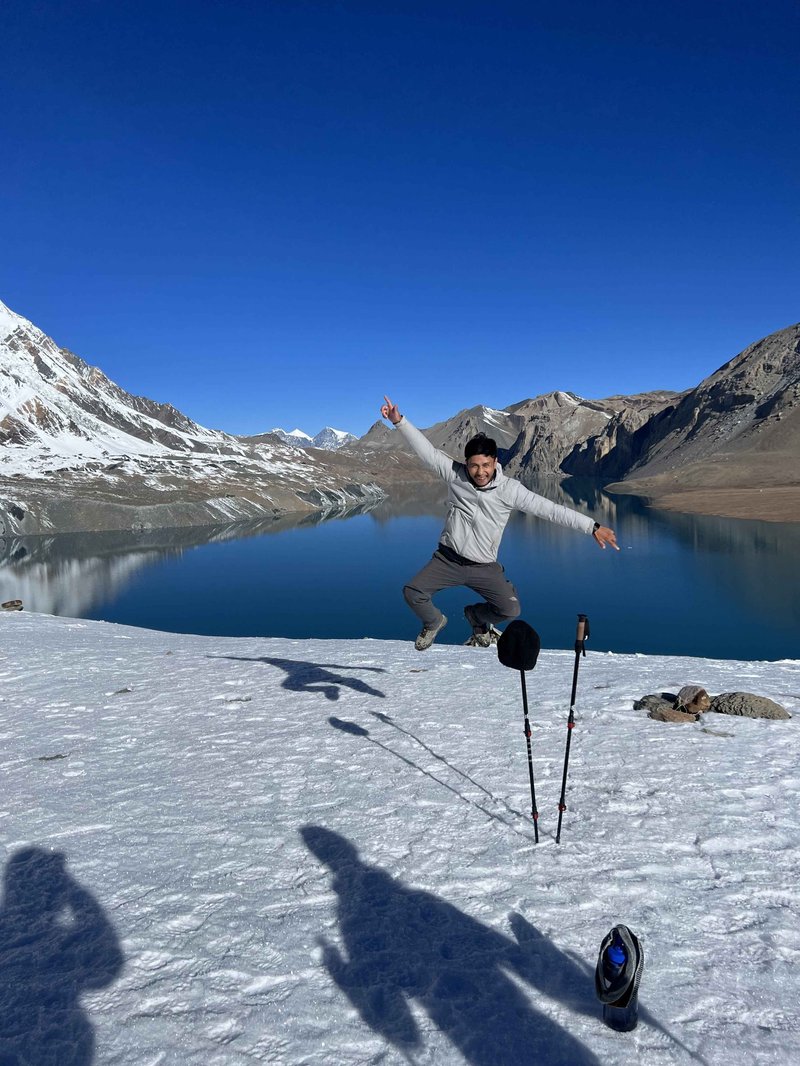
Cultural Sensitivity & Personal Security
Annapurna Circuit Trek is home to diverse ethnic groups with their local customs and traditions. So, you need to be sensitive with your behaviour and have positive interactions with the local people. You need to wear modest clothes, as women should focus on not wearing revealing clothes, and men should also cover their knees and shoulders. Moreover, the locals may be particular about their privacy, especially in the rural areas, so you need to ask their permission before taking their pictures and of their homes. Be respectful and appreciative of their hospitality as well, and use courteous greetings such as saying “Namaste” (Hello) to give positive vibes to them as well.
During your visit to monasteries, you need to remove your shoes before entering and ask permission before taking pictures. Also, do not point at anything that is sacred with your feet because it is considered to be disrespectful to the religious deities and to their religious beliefs. Here is the detailed guide for the cultural highlights of the Annapurna Circuit Trek.
As for your personal security, we recommend that you travel in groups to prevent theft. Wondering how solo trekking would be? You should be familiar with the local laws as well, and always be alert of your surroundings, such as avoiding rides from strangers and stopping from strolling in the less populated areas to be safe.
Recommended Vaccinations
What vaccinations are required for the Annapurna Circuit? Although it is not compulsory that you get vaccinations for the Annapurna Circuit Trek. But we highly recommend that you get vaccinations for the potential diseases and illnesses you may get during the Annapurna Circuit Trek. So, we advise you to get vaccinated against diseases such as Measles, Mumps, Polio, Hepatitis A, Hepatitis B, and Typhoid.
You may also consider getting vaccinations against Rabies and Japanese Encephalitis if you are going to spend more time in remote areas and with animals.
Note: You need to show your vaccination card if you belong to a place that is known for yellow fever issues.
Contact our expert team to customize your perfect Annapurna Circuit trek experience:

